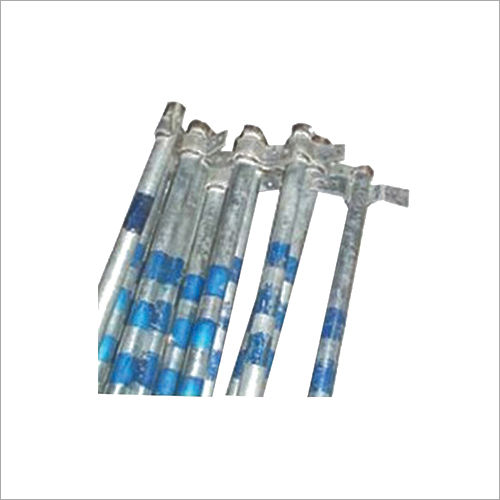
Earthing Pipe
Product Details:
- Application Earthing
- Frequency (MHz) 50 Hertz (HZ)
- Color Silver
- Click to View more
Earthing Pipe Price And Quantity
- 5000 Piece
- 600.00 - 650.00 INR/Piece
Earthing Pipe Product Specifications
- 50 Hertz (HZ)
- Silver
- Earthing
Earthing Pipe Trade Information
- 15000 Piece Per Month
- 2 Days
- All India
Product Description
Establishing a low-resistance connection between an electrical system or piece of equipment and the earth is the main purpose of an earthing pipe. It assists in rerouting electrical faults, lightning strikes, and other surplus currents away from the electrical system, minimising the danger of equipment damage and guaranteeing worker safety.
Since moisture improves the conductivity of the earth, the earthing pipe is typically dug vertically into the ground, frequently reaching a depth where the soil is consistently damp. Based on variables such the soil resistivity and the amount of fault current that needs to be dissipated, the pipe's length is chosen. To reach the appropriate level of earthing, several earthing pipes may occasionally be put in parallel.
Using the appropriate copper conductors or cables, the electrical apparatus or system is linked to the earthing pipe. Typically, clamps or connectors made for grounding applications are used to make these connections. The efficiency of the earthing system must be maintained by making sure that connections are safe and have low resistance.
In general, an earthing pipe is essential for grounding electrical systems and giving surplus electrical current a safe path. The efficiency of the earthing system in shielding people and property from electrical risks depends on proper design, installation, and maintenance.
FAQ
1. What is an earthing pipe?
Ans - Earthing pipes are a form of ground system utilised for electrical safety and lightning protection. To safeguard electrical systems, as well as the persons using or operating them, from potentially harmful electrical shocks, it is buried in the earth.
2.What advantages can earthing pipes offer?
Ans - An earthing pipe offers a safe, secure, and reliable connection to the electrical system to which it is attached. It can lessen the chance of harmful electrical shocks and assist in defending the system against power surges that might harm delicate equipment.
3. How is an earthing pipe installed?
Ans - Typically, installing an earthing pipe involves boring multiple holes in the ground and inserting metal rods. The earthing pipe is linked to the other electrical components and tested for efficiency once the rods have been properly fastened.
4. What kind of substance is utilized to create an earthing pipe?
Ans - The most often utilised materials to create earthing pipe are copper, galvanised steel, PVC, and steel coated with PVC. When it comes to performance, cost, and other variables, each material has pros and cons of its own. Prior to installation, it's crucial to choose the right material for the job.
5. How long is the life of an earthing pipe?
Ans - An earthing pipe can last for many years with correct installation and upkeep. However, to make sure the earthing pipe is working properly, it must be frequently inspected and tested. The earthing pipe needs to be replaced if there is any rust or damage found.

Price:
- 50
- 100
- 200
- 250
- 500
- 1000+
GST : 19AIUPD7069G1ZP
|
 |
MG INDUSTRIES
All Rights Reserved.(Terms of Use) Developed and Managed by Infocom Network Private Limited. |




